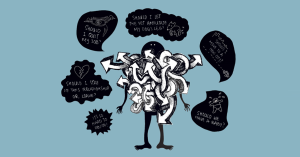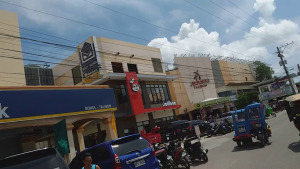Our beloved province of Bohol and the Boholano people played humble but heroic roles in the last Spanish and American Wars, and the Japanese Invasion during World War II.
Our freedom fighters deserve honor and places in history especially the National celebration Of Araw ng Kagitingan on 9th of April and heroes- Veterans weeks From April 5 to April 11 each year.
Our country is no longer a young republic having gone through several revolutionary wars and regional conflicts for the cause of freedom and democracy. Despite our rich heritage, cultural and historical histories, these were blinded with culture and glorifications by some scholars and even by foreign powers.
Many of the Boholanos knew only few national and local heroes to name a few: Datu Lapulapu, Francisco Dagohoy, Dr. Jose Rizal, Andres Bonifacio, Apolinario Mabini, Emilio Aguinaldo, Antonio Luna, Sultan Kudarat, Juan Luna, Marcelo del Pilar, Gregorio del Pilar, Tomas Pinpin, Fr. Gomez, Burgos and Zamora (GOMBURZA), Diego Silang, Gabriela Silang, Francisco Balagtas, Melchora Aquino, Graciano Lopez Jaena, Juan Felipe, Miguel Malvar, Tamblot and others.
I. SPANISH REGIME aside from Datu Lapulapu and Francisco Dagohoy we have a number of Boholano heroes during National regional conflicts.
DATU SIGALA He was the ruling Datu of Bohol, Bohol kingdom including Leyte(Lutaya) and Samar( Samarines) who was higher and of better leadership than Datu Sikatuna. He performed a blood compact with the Spaniard Captain General Miguel de Legaspi on March 28, 1565 at Hinawanan, Loay, and Bohol on board the flagship San Pedro. Chief Sigala remained a Lumad and this may be the reason why the blood compact between Datu Sikatuna and Legaspi was given prominence and remembered by the Spaniards because Datu Sikatuna was converted to Christianity in many Spanish records.
DATU LAGUBAYAN is considered the terror of Mindanao Around 1563, 2 years after the Sigala-Legaspi blood compact, DatuLagubayan he left Bohol with 800 warriors and their families from Leyte and Samar to revenge the death of his brother DatuSirrapada his family and followers and he settled in Dapitan, Zamboanga and later moved to Iligan Lanao in his last years of fighting according to Dr. Jose Rizal in his writings. He conquered the Moro land in Mindanao from Zamboanga, Misamis, Surigao, Agusan, Bukidnon up to Davao. He was also a strong supporter of DatuLapulapu and his forces in defending Mactan Island against the Cebuano forces led by Rajah Humabon and Spanish forces under Ferdinand Magellan. He is also known as DatuPagbuaya in our history.
DATU SIRRAPADA DATUSIRRAPADA OF DAILISAN(Bilisan, of Panglao) is the brother of DatuLagubayan. He with his hundreds of Warriors died during the treacherous attack by the Spanish, Portuguese forces with Moro pirates in 1562. The foreign forces with Moro pirates kidnapped women and children, seized gold and other treasures, foods, and other merchandise and burned their villages.
II. AMERICAN REGIME
BOHOL PRESIDENT BERNABE REYES Don Bernabe Reyes of Dauis Bohol was elected President of the Republic of Bohol by elected delegates at the Provincial Capitol on June 11, 1899. The Republic of Bohol under President Reyes was recognized by the American Regime.
He approved the Bohol Constitution which was drafted by a constitutional convention; the holding of elections of provincial, municipal and barangay officials; organization of police, postal and other administrative offices which were honored by the Americans when they landed in Bohol on March 20, 1900.
Overall, he remained untouched and to a remarkable degree described by the Americans as “a man of very superior ability and education” and ran a well-ordered, peaceful community capable of working its own destiny without aid from President Emilio Aguinaldo and other sources. He was succeeded by President Anecito Clarin in first American sponsored elections. The transition of civil government became official on Bohol on April 3, 1902 with the departure of the American forces in the same month with the US Band playing “Dixie”.
CAPTAIN MARTIN CABAGNOT Captain Martin Cabagnot alias Captain Pakla of Sevilla, Bohol was considered the fightingest commander of the Bohol patriots. According to Historian Jess Tirol, Captain Cabagnot led the brave Boholano patriots that almost annihilated a company of American forces under Captain Andrew Rowan, hero of the American- Spanish War in Cuba, at Kabantian, Gunduilman, Bohol on September 15, 1900. To hide the humiliation, the Americans reported their casualties as “died due to tropical disease (cholera), alcohol poisoning and being shot for desertion.”
In retaliation, the American reinforcement forces reportedly burned more than 20 towns which were reduced to ashes to include Jagna, Dimiao, Duero, Guindulman , Anda, Candijay, Alicia, Mabini, Loay, Baclayon, Loon, Calape, Tubigon, Clarin, Inabanga where the whole police forces were tortured and drowned, and other towns. The smokes from fires were visible in Cebu, Leyte and Camiguin.
The American forces killed and tortured thousands of Boholanos they met or captured to include working animals. The only town spared was Jetafe when the two American forces which were approaching from different directions turned away thinking or assuming that the other lighted the fire. A national paper reported this American war atrocity is more than what happened in Balangiga, Samar.
GENERAL PEDRO SAMSON He was appointed by the American occupation forces as Commandant of the Insular Police or Militia but later on emerged as the biggest enemy. His men were mostly armed with bolos and antique muskets. His brave patriots encountered the American forces at Balikwing, Carmen in August 1900. The former policemen and now General led several encounters with the American forces in the interior towns until he was offered amnesty and finally surrendered at Tagbilaran on December 23, 1902.
BOHOL 13 MARTYRS (TRECE DE MARTIRES DE BATUAN) The thirteen (13) people of Batuan were captured by the American forces inside San Isidro Labrador Parish church of Batuan which was still a barrio of Bilar town on September 20, 1900. The thirteen person who were water tortured and then executed by the American troops were Incocencio Pacatang, Valentin Gumapac, Alejo Morala, Guillermo Gumapac, Gregorio Gumapac, Juan Cubao, Francisco Queza, Masueto Caberte, Martin Hingpit, Carpia Tagubar, Juan Balisa, Faustino Gumapac and Maria Polinar. According to Historian Jess Tirol, those killed were loyal to the Boholano patriots and they preferred to be executed by the invading forces. They did not reveal the locations of the patriots at Camaliga now Barangay Quezon, Batuan only a few Kilometers from the Church.
LONOY, JAGNA MASSACRE The Lonoy, Jagna massacre was one of the unfortunate historical events that took place in the Island of Bohol during the Philippine- American War in 1901. The Americans to avenge their losses during an encounter with Filipino guerrillas at the Kabantian Pass intensified their operations against the insurgents, known to be camping in the different parts of the province. Two Filipino guerrilla encampments were reported to them and they believed to be in the upper part of Lonoy somewhere in Boctol or Clavecita mountain range overlooking Sierra-Bullones.
On the morning of March 8, 1901, the Filipino guerrillas were themselves ambushed. Two American platoons attacked them from the rear while one platoon on each end of the pass blocked their way. There was nowhere to run. Caught in surprise, they were momentarily immobilized. They were not able to raise their arm s to retaliate. They were shot and bayoneted in the trenched and foxholes that they themselves dug. They were mercilessly killed by the American troops who previously received orders not to take any prisoners. In the end, only seven guerrillas were able to escape and the Americans were inflicted with only three casualties and 10 wounded soldiers. Capt. Gregorio Casenas and 406 patriots died in the massacre.
III. JAPANESE REGIME
MAJOR VICENTE T. CUBERO alias “captain Francisco Salazar” Commanding Officer of “Behind the Clouds Force”. Hero of Battle of Moalong in Loon, Bohol which took place on September 27, 1942. This was the first and most successful ambuscade ever recorded in the annals of guerrilla warfare in Bohol. He died in Action at Ubujan, Tagbilaran, October 22, 1942.
MAJOR ISMAEL P. INGENIERO succeeded Captain Francisco Salazar who was killed by Japanese forces in Ubujan Battle and continued fighting for the liberations of Bohol from Japanese forces.
LT. VICENTE K. NUNAG, JR. alias “Lone Wolf” Hero of Moalong, Loon, Bohol. He was designated by Capt. Salazar to take charge of the pistol section when the guerrilla contingent in “Behind the Clouds” left for Moalong, Loon to engage the enemy in an ambush on September 27, 1942. Nunag became Second-in-Command or Asst. Combat Head upon the death of Capt. Espinueva in the Moalong.
CAPTAIN JUAN RELAMPAGOS was a brave and courageous USSAFFE officer who did not surrender to the Japanese forces with nom de guerre “Lieutenant Rogers”. He was one of the most wanted guerrilla leaders because the Japanese believed that he was an American soldier leading the resistance movement in Bohol. He traveled to Leyte and Mindanao and met Captain Salazar who is from Loon and Corella and convinced him to go home to continue his guerrilla fights in our province. He believed that Captain Salazar had combat experience in Mindanao and the guts to unite and lead the guerrilla forces against the Japanese imperial army in Bohol.
LT. ESTEBAN BENIDO A brave and gallant USAFFE officer, who has able to escape from the ruthless persecution by the Japanese forces in Mindanao, organized a group of soldiers and volunteers in his hometown of Guindulman.
PRIVATE AMANDO MIJARES a brave constable of the Philippine Constabulary of Panglao, Bohol. He organized the famous “Baang Guerrilla Force” with members mostly from Panglao Islands and Tagbilaran in Baang, Balilihan, Bohol. His force increased in numbers in Balilihan and part of Catigbian. His “Baang Force” was the first guerilla unit known to the Japanese Imperial army for their first received the first baptism of Fires and casualties in the province during World War II. He later joins the force of Lt. Vicente Nunag, Jr. under Captain Francisco Salazar of the “Behind the Clouds Force”.
CONGRESSMAN TEODORO ABUEVA AND WIFE PURIFICACION VELOSO ABUEVA Cong. Teodoro Abueva was one of the most wanted provincial officials by the Japanese Army. On October 15, 1944, a Japanese patrol surprised him and his family and they were hog-tied and brought to Jagna. They were subjected to cruel punishment and forced to reveal the where-about of the guerrilla officers and their forces. After several days of torture the couple did not betray their fellow guerrillas and they were sentenced to die, then they were brought to Balitbiton, Valencia and were bayoneted to death by the Japanese Forces on October 23, 1944.
Let us also remember and honor both the dead and living veterans who fought in the secessionist and insurgent wars in Mindanao Sulu and other parts of the country.
In more than four (4) centuries of the world, national and regional conflicts particularly in Mindanao, Sulu and other parts of our country several millions of Filipino patriots, soldiers and innocent civilians suffered and died during the Wars. We must honor and recognized their deeds and supreme sacrifices so that the present and future generations can enjoy freedom, peace and prosperity. May our almighty God Bless our beloved country thus the Philippines and the whole Filipino people. (BGEN JOSEPH G. SEVILLA AFP (RET) Member Board of Trustees of the Veterans of World War II(BTVWWII) Member , Veterans Federation of the Philippines- Sons and Daughter Association Inc.(VFP-SDAI)




Be First to Comment